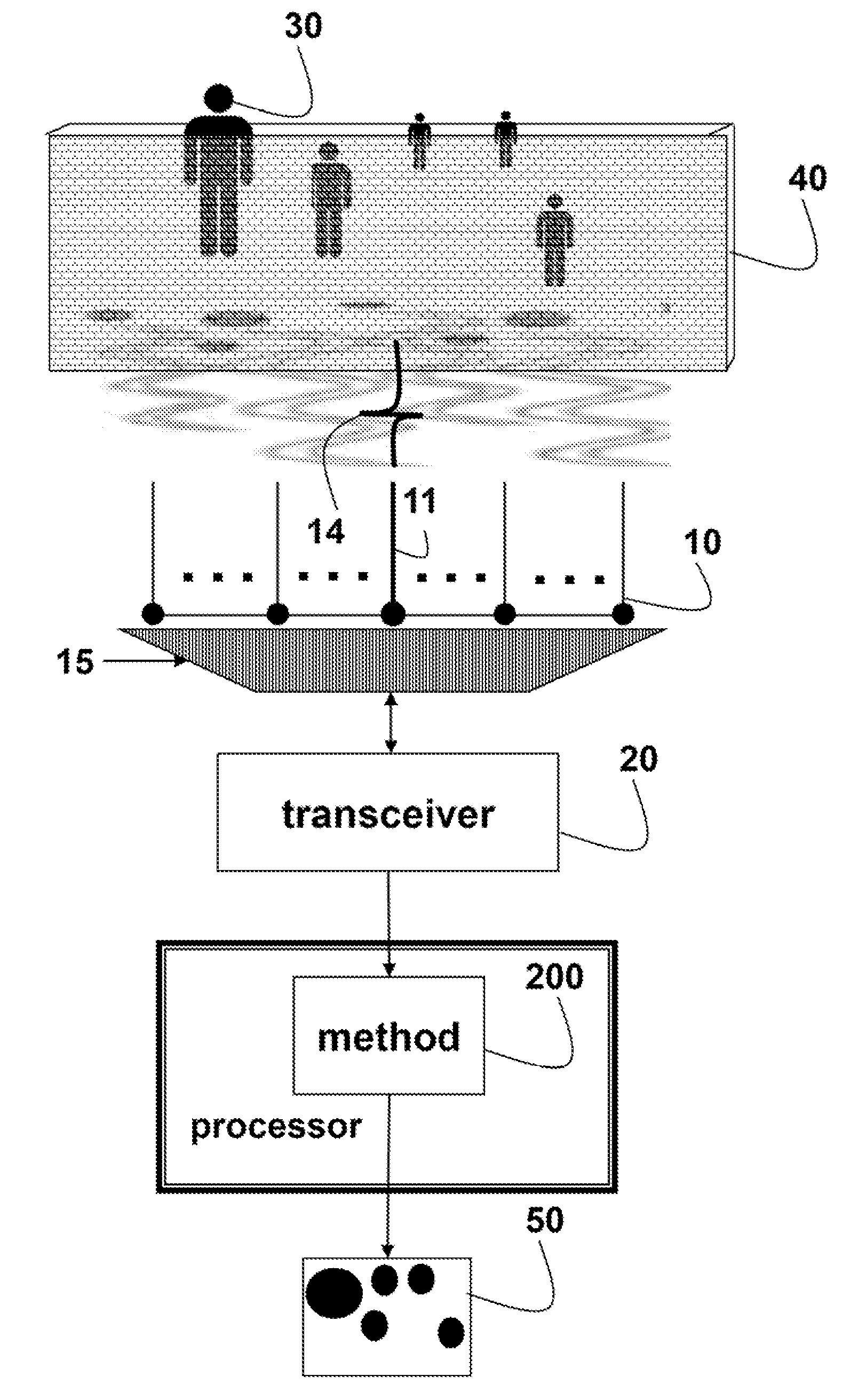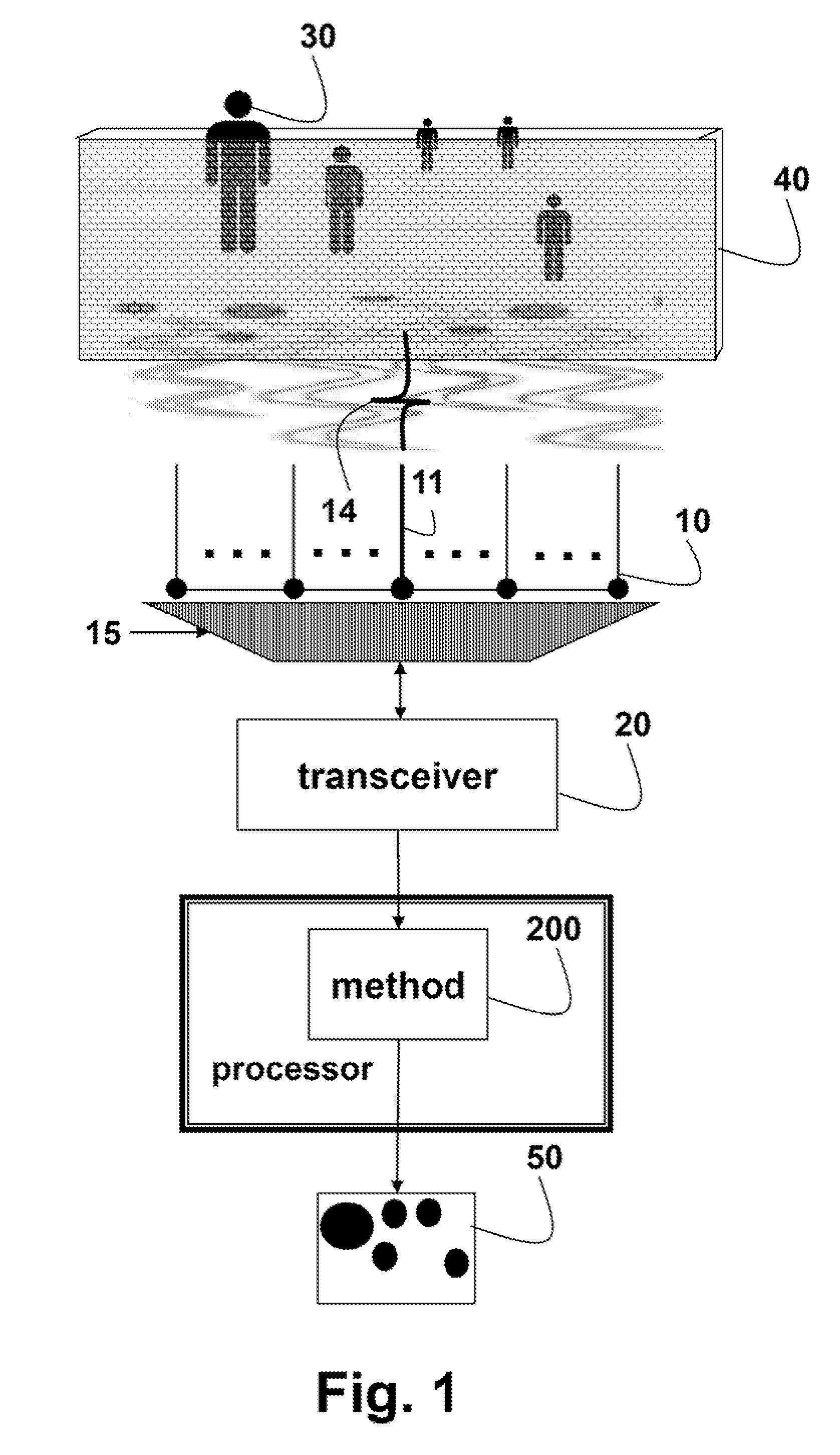Method and System for Through-the-Wall Imaging using Sparse Inversion for Blind Multi-Path Elimination
a technology of sparse inversion and through-the-wall imaging, applied in multi-channel direction-finding systems using radio waves, instruments, measurement devices, etc., can solve problems such as inability to achieve practical application, ghost artifacts in images that appear as noise, etc., and achieve the effect of suppressing ghosting artifacts
- Summary
- Abstract
- Description
- Claims
- Application Information
AI Technical Summary
Benefits of technology
Problems solved by technology
Method used
Image
Examples
Embodiment Construction
System Setup
[0018]As shown in FIGS. 1 and 2, the embodiments of my invention provide a method 200 for multi-path removal in physical aperture and synthetic aperture radar (SAR) through-the-wall imaging (TWI) of targets 30 that does not require any prior knowledge of scene geometry. As an advantage, the method reduces ghosting artifacts by iteratively refining detected impulse responses.
[0019]A transceiver 20 transmits one or more pulses 14 by, e.g., selecting 15 a central antenna element 11 of an antenna array 10 with, for example, 21 elements. The receiving elements are half-wavelength apart:, which is 3 cm for a pulse with a central frequency ƒc=5 GHz. Typically, through-the-wall radar and imaging systems operate in the ultra-wide band (UWB) from about 1.6 to about 10.5 GHz. 5. if the antenna array has a non-uniform separation distance between the elements, then, the time-domain data can be interpolated. In this case, the resolution of the output matches a smallest separation betw...
PUM
 Login to View More
Login to View More Abstract
Description
Claims
Application Information
 Login to View More
Login to View More - R&D
- Intellectual Property
- Life Sciences
- Materials
- Tech Scout
- Unparalleled Data Quality
- Higher Quality Content
- 60% Fewer Hallucinations
Browse by: Latest US Patents, China's latest patents, Technical Efficacy Thesaurus, Application Domain, Technology Topic, Popular Technical Reports.
© 2025 PatSnap. All rights reserved.Legal|Privacy policy|Modern Slavery Act Transparency Statement|Sitemap|About US| Contact US: help@patsnap.com



